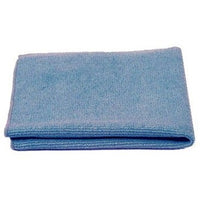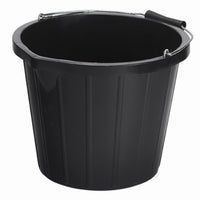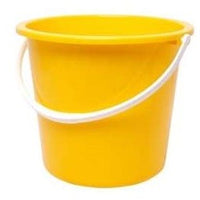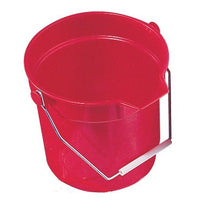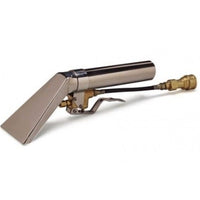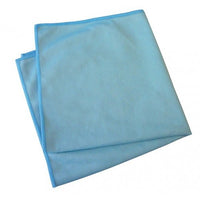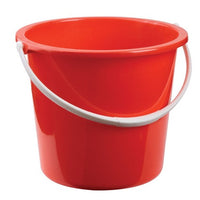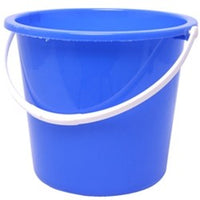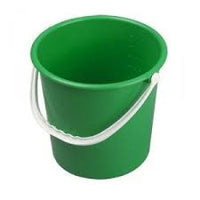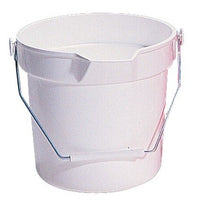Collection: Valeting Accessories
Professional valeting accessories designed for comprehensive car cleaning and detailing operations. Featuring premium microfibre cloths in multiple colours, wash mitts, terry towels and valeting buckets. Essential tools for professional valeting businesses, automotive detailers and car enthusiasts requiring quality equipment.
Valeting Accessories Product information
Valeting accessories represent the essential tools that enable professional car cleaning and detailing results, providing the foundation for effective
cleaning procedures whilst ensuring surface safety and operational efficiency across all automotive cleaning applications.
At ClickCleaning, we provide professional-grade valeting accessories including premium microfibre cloths available in multiple colours (blue, red,
green, and yellow), specialised MicroGlass cloths for streak-free glass cleaning, quality wash mitts for safe vehicle washing, white terry towels for absorbent drying applications, practical valeting buckets in various sizes including 14-litre black and 10-litre yellow options, standard yellow dusters
for general cleaning tasks, and PVC knit-wrist gloves for hand protection during cleaning operations.
The importance of quality valeting accessories extends beyond immediate cleaning effectiveness to include surface protection, operational efficiency, and professional presentation standards. Using appropriate tools prevents surface damage whilst ensuring consistent results that meet customer expectations and support business reputation in competitive valeting markets.
Microfibre technology represents a significant advancement in cleaning effectiveness through synthetic fibres engineered at microscopic levels. Our
microfibre cloths contain thousands of soft, non-abrasive microscopic fibres that create static charges to attract and retain minute particles of dust and
dirt. These cloths are durable, strong, and absorbent, maintaining performance through multiple uses and machine washing cycles whilst providing versatility for wet or dry applications.
The colour-coding system in our microfibre cloth range enables contamination prevention and workflow organisation essential for professional operations. Different colours can be designated for specific applications—preventing cross-contamination between interior and exterior cleaning, different vehicle areas, or various cleaning stages that maintain hygiene standards and prevent surface damage.
MicroGlass cloths provide specialised performance for glass and mirror cleaning applications where streak-free results are essential for both safety and appearance standards. These cloths are specifically designed for shiny surfaces including metal, delivering superior performance compared to standard
cleaning materials whilst maintaining the non-abrasive characteristics essential for delicate surface protection.
Wash mitts enable safe vehicle washing through soft construction that reduces scratching risk whilst providing effective cleaning action. Quality wash mitts maintain their structure through multiple uses whilst offering superior dirt encapsulation compared to sponges or cloths that can drag contamination across paint surfaces.
Terry towels provide exceptional absorption characteristics essential for vehicle drying applications where water spot prevention and efficient moisture
removal are priorities. Our white terry towels offer lint-free performance whilst maintaining sufficient absorbency for professional drying requirements.
Valeting buckets support proper washing procedures through appropriate capacity and construction that enables efficient cleaning operations. Our range
includes various sizes to accommodate different operational requirements whilst providing durability essential for commercial use.
PVC knit-wrist gloves protect hands during cleaning operations whilst maintaining dexterity necessary for detailed work. These gloves provide chemical resistance and grip characteristics essential for safe handling of cleaning products and equipment.
Whether you're operating a professional valeting business, providing automotive detailing services, or maintaining vehicles to professional standards, ClickCleaning's valeting accessories provide the essential tools that combine quality construction with practical features to support superior cleaning results and operational efficiency.
Please contact us if you have any questions about our range we can assist with.
Valeting Accessories FAQs
What's the difference between your microfibre cloths and MicroGlass cloths?
The main difference is what they're designed for. Our standard microfibre cloths are brilliant all-rounders - you can use them for pretty much any car cleaning task, from applying wax and polish to general cleaning and buffing. They're perfect for paintwork because they won't scratch or damage the surface.
The MicroGlass cloths are specialists. They're specifically made for cleaning glass, mirrors, and shiny metal surfaces where you need that perfect streak-free finish. The fibre construction is optimised to leave zero streaks or smears on glass, which is exactly what you want when you're cleaning windscreens or windows.
Both types are made with those microscopic fibres that create a static charge to grab dirt and dust, and both are completely non-abrasive. But if you're doing a lot of glass work, the MicroGlass cloths will give you better results because that's exactly what they're made for.
The standard microfibre cloths come in different colours too - blue, red, green, and yellow - which is handy if you want to colour-code your cleaning (like using red for wheels, blue for paintwork, that sort of thing). The MicroGlass cloths focus purely on performance for glass surfaces.
You can wash and reuse both types loads of times without them losing their effectiveness, so they're great value. If you're just starting out, I'd say get some standard microfibre cloths first as they'll cover most jobs, then add MicroGlass cloths if you find you're doing lots of glass cleaning.
Why should I use a wash mitt instead of a sponge?
Honestly, once you try a proper wash mitt, you'll never go back to a sponge. The biggest difference is safety for your paintwork.
Sponges are basically flat surfaces, so when you pick up dirt and grit, it gets trapped against the sponge and then you're dragging that contamination across your paint. That's how you get those horrible swirl marks and scratches that ruin your car's finish.
A wash mitt works completely differently. The fibres trap the dirt inside the mitt rather than on the surface, so you're not grinding contamination into your paintwork. When you rinse the mitt in your bucket, all that dirt and grit falls out, leaving the mitt clean for the next section.
Our wash mitts are made from soft materials that won't scratch your paint, but they're still effective at lifting dirt. They're also much better at holding soapy water, so you get better lubrication as you wash - and lubrication is key to preventing scratches.
You'll find washing with a mitt is actually more enjoyable too. You can feel the dirt coming off, and you know you're not damaging your paint in the process. They last ages as well - just throw them in the washing machine when they need a proper clean.
If you're serious about keeping your car looking its best, a quality wash mitt is one of the best investments you can make. Your paintwork will thank you for it.
How do I use the colour-coded microfibre cloths properly?
The colour-coding system is brilliant for keeping your cleaning organised and preventing cross-contamination. Here's how most professionals do it, and it works really well:
Pick one colour for paintwork - let's say blue. This cloth only ever touches clean paint surfaces for applying products, buffing wax, or final polishing. Keep it away from wheels, exhaust pipes, or really dirty areas.
Use red for wheels and tyres. These areas get the dirtiest with brake dust and road grime, so you want a dedicated cloth that won't transfer that contamination to cleaner parts of the car.
Green works well for interior cleaning - plastics, dashboards, that sort of thing. You don't want to mix interior and exterior cloths because you might transfer different types of dirt or cleaning products.
Yellow can be your general exterior cloth for door shuts, boot areas, or initial cleaning before you move to your 'good' cloths.
The key is being consistent. Once you've used a red cloth on wheels, it stays as a wheel cloth. Don't think "oh, it looks clean enough" and use it on paintwork - that's how you get scratches.
Keep them separate when you wash them too. Wheel cloths in one wash load, paint cloths in another. Use a gentle detergent and don't use fabric softener as it clogs up the fibres.
You don't have to use the exact same colour system I've suggested - the important thing is that you pick a system and stick to it. Some people prefer different combinations, but the principle is the same: keep dirty job cloths separate from clean job cloths.
What size buckets do I need for car washing?
For proper car washing, you really want two buckets - that's the secret to keeping your wash mitt clean and preventing scratches.
Our 14-litre black bucket is perfect as your main wash bucket. It's got plenty of capacity for soapy water and room to work your wash mitt around properly. The larger size means the water stays cleaner for longer, and you're not constantly running out of suds.
The 10-litre yellow bucket works brilliantly as your rinse bucket. You fill this one with clean water, and every time you've washed a section of the car, you rinse your mitt in here first before going back to the soapy water. This stops you from contaminating your wash water with dirt.
Why two buckets? Simple - it keeps your wash water clean. Without a rinse bucket, you're just dunking your dirty mitt back into the soapy water, and then you're washing your car with dirty water. That defeats the whole point.
The size difference is actually quite handy because you can tell them apart easily. Big bucket for washing, smaller bucket for rinsing. Some people like to use different colours too, which is why we do the black and yellow - makes it really obvious which is which.
If you're doing this professionally or washing multiple cars, you might want two of the larger buckets for even more capacity. But for most people, the 14-litre and 10-litre combination works perfectly.
Trust me, once you start using the two-bucket method, you'll notice the difference in your results. Your car will come out cleaner and you'll have far less risk of scratching the paint.
How do I care for and maintain my microfibre cloths?
Looking after your microfibre cloths properly means they'll last ages and keep performing like new. The good news is it's not complicated, but there are a few key things to remember.
First, rinse them out straight after use. Don't let polish, wax, or cleaning products dry into the fibres - it makes them stiff and less effective. Just give them a good rinse in clean water and wring them out.
When it comes to washing them properly, use your washing machine but skip the fabric softener. Fabric softener actually clogs up those microscopic fibres and ruins their ability to pick up dirt and dust. Just use a normal, gentle detergent.
Wash them separately from your regular clothes, especially anything with cotton or that produces lint. Microfibre cloths will pick up all that lint and it's a nightmare to get out. I usually wash all my valeting cloths together in one load.
Keep the water temperature moderate - around 40°C is perfect. Too hot and you might damage the synthetic fibres, too cold and you won't get them properly clean.
For drying, air drying is best, but you can tumble dry on a low heat if needed. Again, no fabric softener sheets in the dryer.
Here's a professional tip: if a cloth starts to feel rough or isn't performing well, try soaking it in white vinegar for an hour, then wash it normally. This often brings them back to life by removing any product buildup.
Replace them when they start to show signs of wear - if they're leaving lint, feeling scratchy, or just not cleaning as well as they used to. Good microfibre cloths should last you months or even years with proper care.
What protective equipment should I use when valeting?
Safety should always come first when you're valeting, and the right protective gear makes the job much more comfortable too.
Our PVC knit-wrist gloves are essential for protecting your hands. Car cleaning products can be quite harsh on your skin, especially if you're doing this regularly or professionally. These gloves give you chemical protection while still letting you feel what you're doing - which is important when you're handling delicate surfaces or small parts.
The knit-wrist design is brilliant because it stops water and cleaning products from running down your arms. There's nothing worse than getting soaked when you're trying to work, and wet sleeves are just uncomfortable.
For your eyes, especially if you're using any spray products, safety glasses are a good idea. You don't need anything fancy, just basic protection in case something splashes or the wind catches a spray.
If you're working with stronger chemicals or doing this professionally, consider getting some proper chemical-resistant gloves for heavy-duty jobs. The PVC gloves are great for general work, but if you're dealing with wheel cleaners, degreasers, or other strong products regularly, you might want something heavier duty.
Knee pads can be a lifesaver if you're spending a lot of time working on lower parts of vehicles. Your knees will thank you, especially on concrete or rough surfaces.
And here's something people often forget - decent clothing. Wear something you don't mind getting dirty, but also something that won't scratch the car if you lean against it. Avoid anything with zips, belt buckles, or rough textures that could mark the paintwork.
The main thing is being sensible. If a product says to wear gloves, wear gloves. If something smells strong or makes your skin tingle, get some protection. It's not worth risking your health for the sake of a few pounds on safety gear.
How do terry towels compare to microfibre for drying?
Both have their place, and many professionals actually use both depending on what they're doing.
Terry towels, like our white ones, are fantastic for absorption. They can soak up loads of water really quickly, which makes them brilliant for the initial drying where you want to get most of the water off fast. They're particularly good for larger, flatter surfaces where you can lay the towel down and drag it across.
The thing with terry towels is they're quite forgiving. If there's a bit of dirt left on the surface, they're less likely to scratch than some other materials. They're also really good for areas where you need a bit more texture to grab water - like in panel gaps or around trim.
Microfibre cloths are more precise. They're excellent for final drying and for areas where you want perfect, spot-free results. They're also better for delicate surfaces and areas where you need to be really careful about scratching.
Here's how I'd use them: start with a terry towel to get most of the water off quickly, then finish with a clean microfibre cloth for the perfect, spot-free finish. The terry towel does the heavy lifting, the microfibre does the precision work.
For glass and mirrors, I'd go straight to microfibre - they give you that perfect streak-free finish that you just can't get with terry towels.
Both types need to be kept clean and washed properly. Terry towels can handle a bit more abuse in the washing machine, but you still want to avoid fabric softener.
If you're just starting out and can only get one type, I'd probably go for microfibre because of the versatility. But if you're doing this regularly, having both gives you the best of both worlds.
What's the best way to organise my valeting accessories?
Getting organised makes valeting so much easier and more enjoyable. Plus, if you're doing this professionally, being organised looks professional and saves you loads of time.
Start with your colour-coded cloths. Get yourself some separate containers or bags for each colour - you want to keep them apart even when they're clean. I use simple plastic tubs with labels. Blue cloths stay in the blue tub, red cloths in the red tub, and so on. No mixing, ever.
Keep your wash mitts separate from your cloths. They need different care and you don't want to mix them up. A simple mesh laundry bag works well for storing clean mitts.
Your buckets can actually help with organisation. When you're not using them for washing, they're great for storing other kit. Keep all your wheel cleaning stuff in one bucket, interior products in another.
Create a system for dirty vs clean kit. Never mix dirty cloths with clean ones - you'll just spread contamination around. I use one side of my storage area for clean kit, the other side for dirty stuff waiting to be washed.
For chemicals and products, group them by function. All your polishes together, all your cleaners together, all your interior products together. Makes it much quicker to find what you need.
If you're mobile valeting, get yourself a proper organiser box or bag. Everything has its place, you can carry it all in one go, and you look professional when you turn up at a customer's house.
Here's a pro tip: make a checklist of your essential kit. Especially if you're working away from base, there's nothing worse than getting to a job and realising you've forgotten something important.
Keep your most-used items easily accessible. The stuff you reach for on every job should be right there, not buried at the bottom of a box.
When should I replace my valeting accessories?
Knowing when to replace your kit is important for maintaining quality results and protecting the vehicles you're working on.
For microfibre cloths, the signs are pretty obvious. If they start feeling rough or scratchy, they need to go. You should never use a cloth that feels like it might scratch. If they're leaving lint behind or not cleaning as well as they used to, that's another sign. Also, if you can't get them properly clean anymore - sometimes they get so contaminated that washing doesn't bring them back - it's time for new ones.
Wash mitts should be replaced when they start to fall apart or lose their softness. If the fibres are matted down and won't fluff up after washing, or if there are any rough spots developing, get a new one. A damaged mitt can scratch paintwork, so don't take chances.
Terry towels last quite a long time, but replace them when they become thin, start leaving lint, or develop rough patches. If they're not absorbing water like they used to, they're past their best.
Buckets need replacing if they develop cracks (especially small ones that might trap dirt), if the bottom gets scratched up badly, or if you can't get them properly clean anymore. A scratched bucket bottom can trap grit that might transfer to your mitt.
For gloves, replace them as soon as they get any holes or tears. Chemical protection is the main point, so any damage means they're not doing their job properly.
Here's the thing - quality valeting accessories aren't expensive compared to the damage that worn-out kit can cause. If you scratch someone's paintwork because you used a knackered cloth, that's going to cost you far more than a new set of microfibre cloths would have.
As a general rule, if you're questioning whether something needs replacing, it probably does. Professional results need professional kit, and that means keeping everything in good condition.
Can I use these accessories for other cleaning jobs around the house?
Absolutely! Actually, microfibre cloths are brilliant for household cleaning. Once they're getting a bit too worn for car work, they get a second life around the house.
The MicroGlass cloths are fantastic for mirrors, windows, and any glass surfaces in your home. They'll give you the same streak-free results you get on car windows. Perfect for bathroom mirrors or cleaning the TV screen.
Your microfibre cloths work brilliantly for dusting furniture, cleaning surfaces, and general household tasks. The same properties that make them good for cars - trapping dirt, being non-abrasive, working wet or dry - make them excellent for house cleaning.
Terry towels are great for bathroom cleaning, kitchen spills, or anywhere you need good absorption. They're much better than paper towels for most jobs and obviously much more environmentally friendly.
The buckets are just buckets - they'll work for mopping floors, cleaning outdoor furniture, or any other household task where you need a decent-sized container.
Here's what I'd suggest: keep your best, newest kit for car work only. As things get a bit older or worn, demote them to household duties. That way you maintain quality for your valeting while getting maximum value from your accessories.
Just be sensible about what you use where. Don't use a cloth that's been cleaning the kitchen on your car's paintwork, even if it looks clean. Keep car kit and house kit separate once you've made the switch.
The colour-coding system works well for household cleaning too. You could use the same principle - different colours for kitchen, bathroom, living areas, etc. Helps prevent cross-contamination just like it does with car cleaning.



